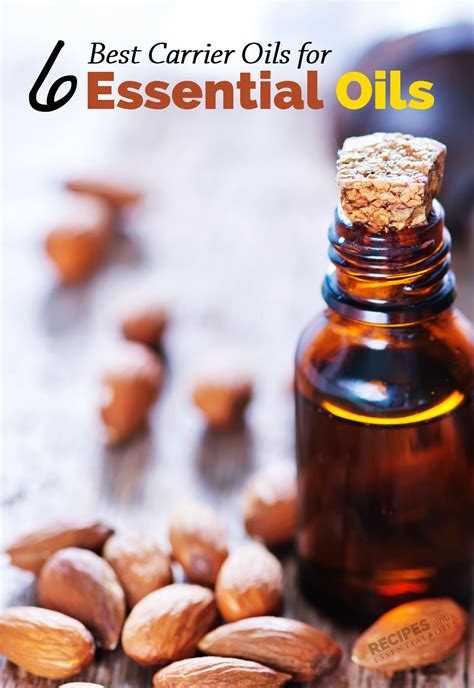Essential Oil Carrier Oils: Unlocking the Power of Aromatherapy
Essential oils are highly concentrated plant extracts that offer a myriad of therapeutic benefits. To safely apply these potent oils to the skin, a carrier oil is essential. Carrier oils dilute and transport essential oils, enhancing their absorption and reducing potential skin irritation.

Choosing the Perfect Carrier Oil
Selecting the right carrier oil is crucial for maximizing the efficacy of essential oils. Consider the following factors:
- Viscosity: Thicker oils, like coconut oil, are ideal for massage and body care. Lighter oils, such as jojoba oil, are suitable for facial care and personal care.
- Absorption rate: Oils with a higher absorption rate, like grapeseed oil, penetrate the skin quickly. Slower-absorbing oils, like sesame oil, create a protective barrier.
- Aroma: Some carrier oils have a noticeable scent that may interfere with the essential oils’ aroma. Choose odorless oils, like sweet almond oil, for a pure aromatherapy experience.
Top 6 Carrier Oils for Essential Oils
- Jojoba Oil: Mimics skin sebum, providing excellent absorption and nourishing benefits.
- Coconut Oil: Antibacterial, antifungal, and moisturizing properties make it ideal for body care.
- Sweet Almond Oil: Rich in vitamins A and E, it is known for its soothing and softening qualities.
- Grapeseed Oil:** Lightweight and non-comedogenic, it absorbs quickly and is suitable for all skin types.
- Avocado Oil: High in antioxidants and vitamins, it nourishes mature and dry skin.
- Sesame Oil: Slow-absorbing and warming, it is often used in aromatherapy for its relaxing and grounding effects.
Table 1: Carrier Oil Viscosity and Absorption Rates
| Carrier Oil | Viscosity | Absorption Rate |
|---|---|---|
| Jojoba Oil | Medium | High |
| Coconut Oil | Thick | Medium |
| Sweet Almond Oil | Medium | High |
| Grapeseed Oil | Light | High |
| Avocado Oil | Thick | Low |
| Sesame Oil | Thick | Low |
Table 2: Carrier Oil Properties and Benefits
| Carrier Oil | Properties | Benefits |
|---|---|---|
| Jojoba Oil | Non-comedogenic, anti-inflammatory | Balances skin, reduces inflammation |
| Coconut Oil | Antibacterial, antiviral | Moisturizes, protects against infection |
| Sweet Almond Oil | Rich in vitamins A and E | Nourishes, soothes, and softens |
| Grapeseed Oil | High in antioxidants | Protects against free radical damage |
| Avocado Oil | High in antioxidants and vitamins | Nourishes, regenerates, and protects |
| Sesame Oil | Slow-absorbing, warming | Relaxes, soothes, and grounds |
Table 3: Carrier Oil Aromas
| Carrier Oil | Aroma |
|---|---|
| Jojoba Oil | Odorless |
| Coconut Oil | Coconut-like |
| Sweet Almond Oil | Odorless |
| Grapeseed Oil | Odorless |
| Avocado Oil | Faintly nutty |
| Sesame Oil | Nutty, earthy |
Table 4: Essential Oil Carrier Oil Concentration Guidelines
| Essential Oil | Carrier Oil | Concentration |
|---|---|---|
| Lavender | Jojoba Oil | 2-3 drops per 10 ml |
| Peppermint | Coconut Oil | 1-2 drops per 10 ml |
| Tea Tree | Sweet Almond Oil | 1-2 drops per 10 ml |
| Eucalyptus | Grapeseed Oil | 2-3 drops per 10 ml |
| Frankincense | Avocado Oil | 1-2 drops per 10 ml |
| Ylang-Ylang | Sesame Oil | 2-3 drops per 10 ml |
Common Mistakes to Avoid
- Using too much essential oil: Carrier oils dilute essential oils for safe application. Excess essential oils can cause skin irritation.
- Applying essential oils directly to skin: Essential oils are highly concentrated and can be irritating or even harmful. Always dilute them with a carrier oil.
- Not doing a patch test: Test a small amount of the diluted essential oil on a small area of skin before applying it to a larger area. This helps rule out any allergic reactions.
- Ignoring the viscosity of carrier oils: Thicker oils may clog pores or leave a greasy residue. Choose a viscosity appropriate for your desired application.
- Mixing too many essential oils: Combining too many essential oils can result in overwhelming aromas and reduced effectiveness. Limit yourself to 2-3 oils per blend.
Step-by-Step Guide to Blending Essential Oils and Carrier Oils
- Determine your desired application: Consider whether you want to use the blend for massage, skincare, or aromatherapy.
- Choose a carrier oil: Select a carrier oil based on its viscosity, absorption rate, and aroma.
- Add the essential oils: Dilute essential oils with a carrier oil at the desired concentration (see Table 4).
- Test the blend: Apply a small amount of the diluted blend to a small area of skin. Wait 24 hours to rule out any reactions.
- Enjoy the benefits: Use the blended oil as desired and reap the therapeutic benefits of aromatherapy.
Unlock New Applications
Beyond traditional aromatherapy, essential oil carrier oil blends have countless creative uses. Consider:
- DIY skincare: Create customized body oils, serums, and creams with nourishing carrier oils and beneficial essential oils.
- Aromatherapy jewelry: Diffuse essential oils throughout the day with pendants, bracelets, or roll-ons filled with carrier oil blends.
- Room scenting: Add a few drops of a carrier oil blend to a diffuser to create a relaxing or invigorating atmosphere.
- Hair care: Nourish and condition hair with hair oils infused with carrier oils and essential oils like rosemary or lavender.
- Bath bombs and soaps: Enhance bath time with fizzy bath bombs or fragrant soaps made with carrier oils and essential oils.
Conclusion
Essential oil carrier oils are essential for unlocking the transformative power of aromatherapy. By understanding the properties and characteristics of different carrier oils, you can create customized blends tailored to your specific needs and preferences. Embrace the versatility of these oils and explore the boundless opportunities they offer for well-being and natural remedies.
